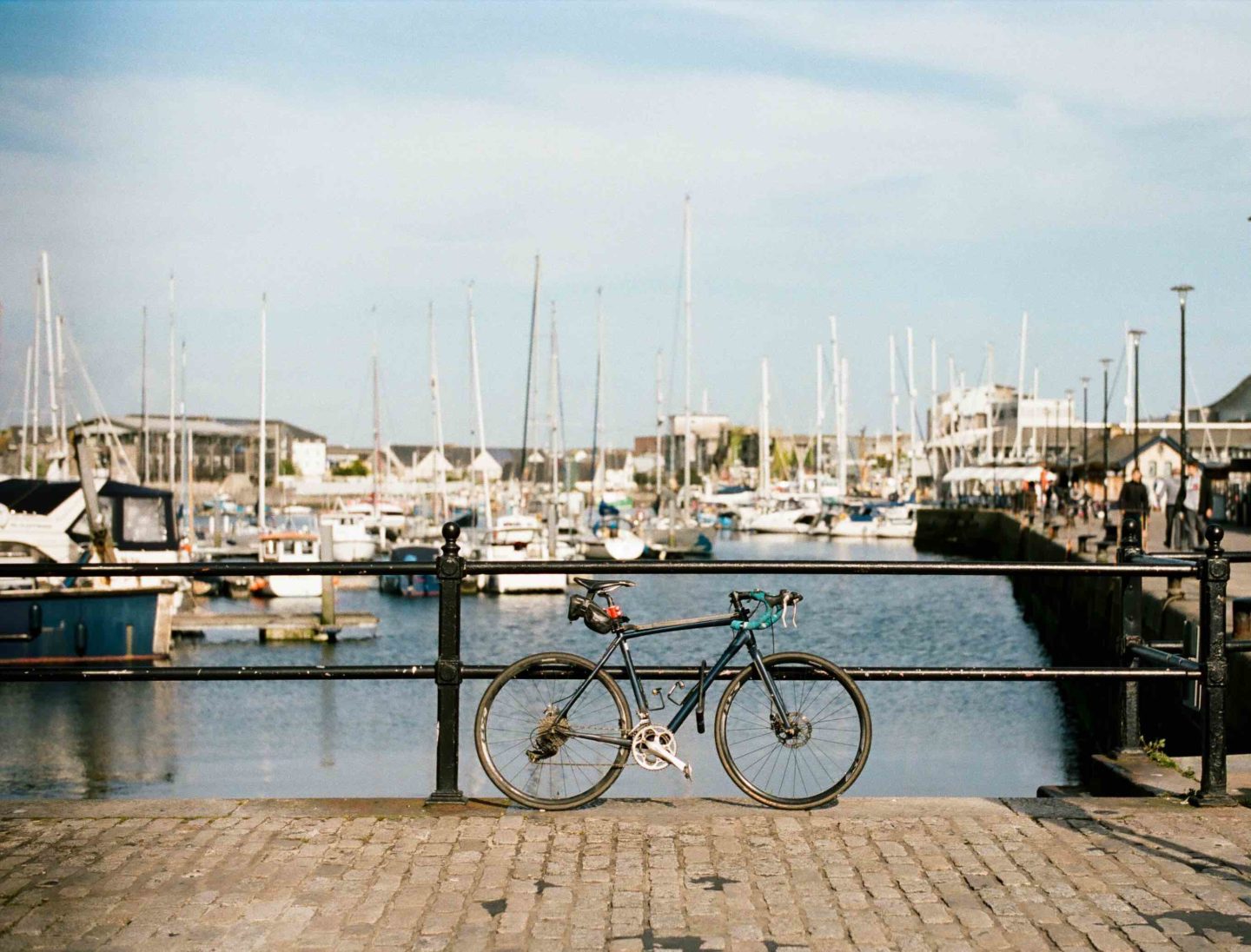
Located in the South West of England, Devon is a popular UK staycation destination for Brits and offers a strong pull for international visitors too. And I can see why!
I love this charming county and keep on returning time and time again to explore more if its corners. With its towering white cliffs, sandy beaches, and rugged moorland, Devon is a haven of natural beauty.
Wander around the picture-perfect waterside towns, go hiking in the National Parks, or get your surfboard at the ready and enjoy the world-renowned surf breaks.
From the quaint charm of sleepy fishing villages to the glamour of the English Riviera, I really believe that Devon has something for everyone.
With so much to see and do across both North Devon and South Devon, I completely understand that it can be difficult to know where to start – but don’t worry because I’m here to help!
Whether you’re after a romantic getaway, a family-friendly staycation, or a more adrenaline-fuelled escape, here are my all-time favourite places to visit in Devon.
Note that if you’re after towns and villages then have a read of my guide to the best seaside towns in Devon.
This post contains affiliate links.
Best places to visit in North Devon
From charming fishing villages to a vast National Park, here are is my handpicked selection of the best places to visit in North Devon.
Exmoor
Best for: Wild landscapes and wildlife
Must-do: A digital detox in the National Park
Where to stay: The Exmoor Forest Inn
One of two National Parks in Devon, Exmoor National Park offers 267 square miles of breathtaking scenery.
It’s a landscape of high rolling moorland, ancient woodland, rocky beaches, and crystal-clear rivers. The park is home to an abundance of wildlife, including the famous Exmoor ponies and wild red deer.
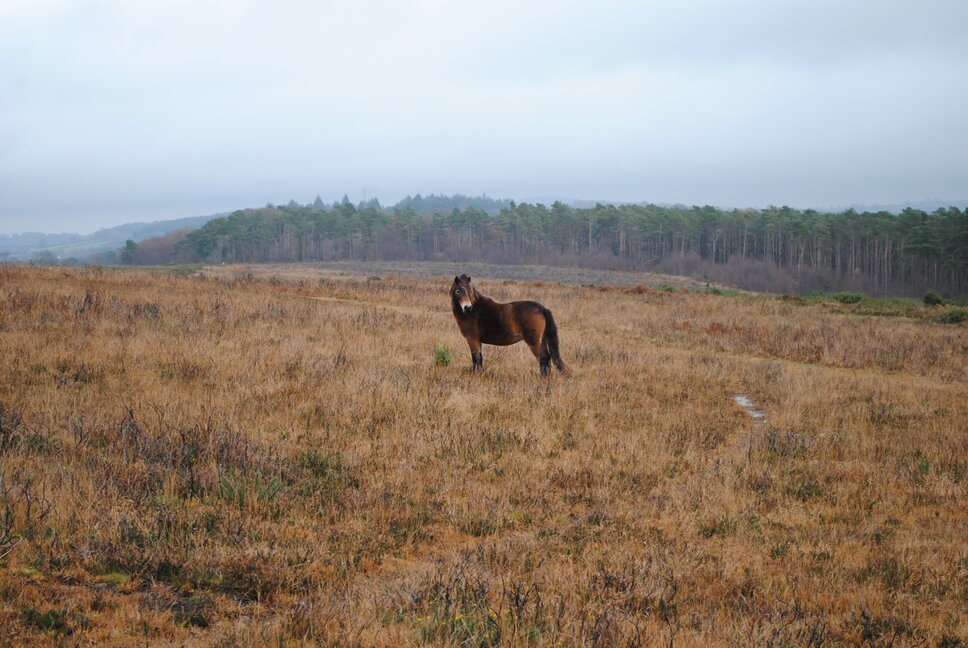
Exmoor backs onto the north coast of Devon and brings a dramatic coastline of cliffs and headlands, with some of the highest cliffs in England.
One of the most iconic places to visit in Devon, I think the National Park is a perfect destination for a digital detox immersed in nature. It’s perfect for long walks, with over 1,000 km of footpaths and bridleways.
Walking aside, there are plenty of other activities. Canoe along the rivers, go horse riding or pony trekking, or try game shooting.
For the thrill-seekers, get the adrenaline pumping with mountain biking, white water kayaking, and rock climbing. Or for a more unique experience, I’d recommend trying out a night time star safari.
Lundy Island
Best for: Wildlife and scenery
Must-do: Rambling and wildlife spotting
Where to stay: Lundy Island self-catering properties
Owned by the National Trust, Lundy Island lies off the coast of North Devon, where the Bristol Channel meets the Atlantic Ocean.
It is only three miles long and half a mile wide, but believe me when I say that there’s a lot to see and do for such a small island. Popular activities include climbing, diving, fishing, rambling, rock pooling, and snorkelling.
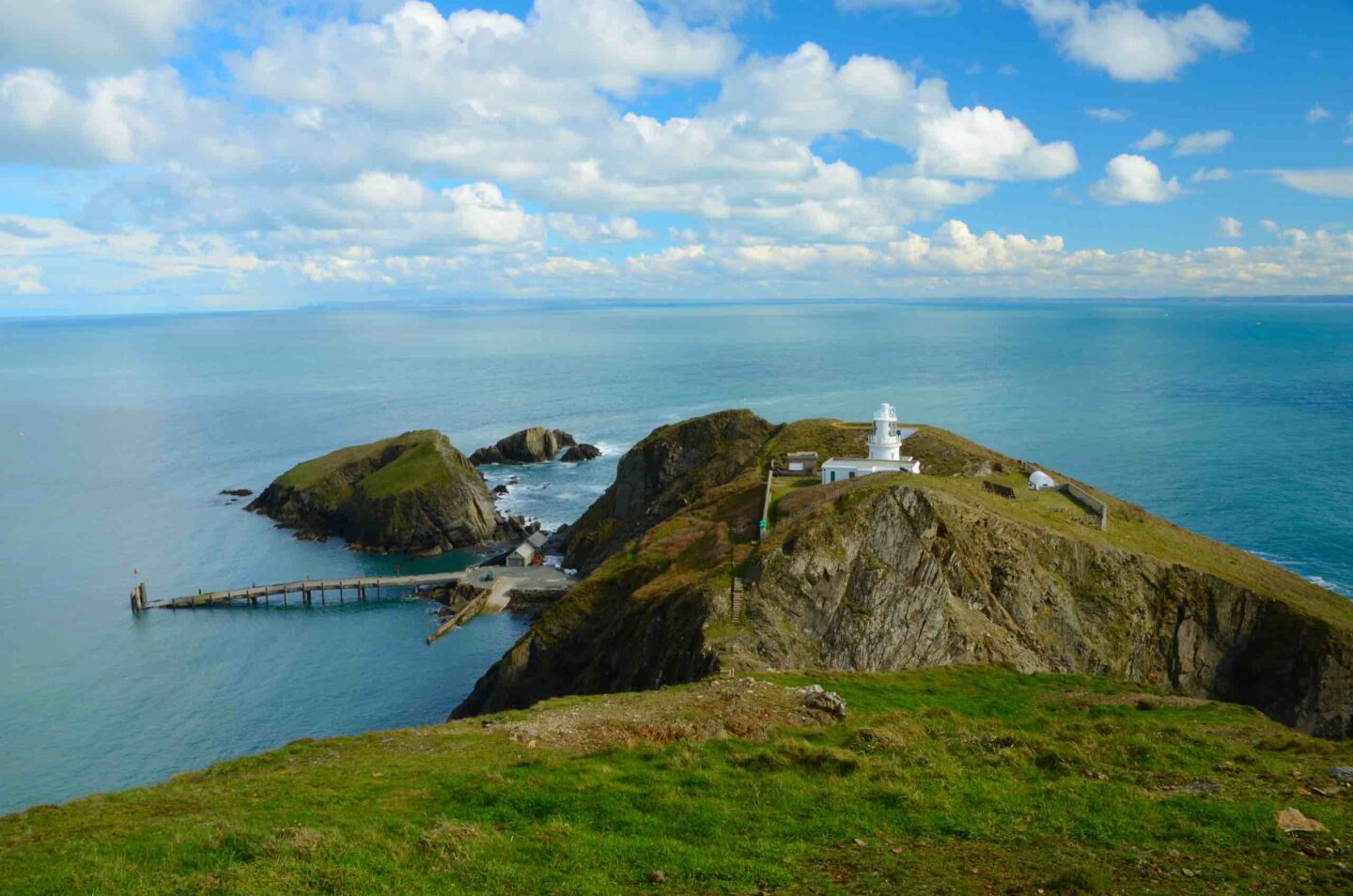
Lundy Island is also an idyllic spot for walkers. There’s an abundance of wildlife to discover, including puffins and other unique seabirds.
The island’s wildlife and scenery are so spectacular that they are often compared to the Galapagos. If that’s not reason enough to visit then I don’t know what is! I love that a lot of effort has gone into preserving the island, so it feels very unspoilt.
This is a big part of its draw as one of the best places to visit in Devon, along with its backdrop of dramatic scenery.
Good to know: Lundy Island is accessed from Ilfracombe via ferry, which takes two hours each way. You can stay overnight in one of 23 self-catered holiday properties, where you’ll undoubtedly enjoy a very peaceful stay.
Watermouth
Best for: Campers
Must-do: Watermouth Castle
Watermouth is a quaint hamlet that lies between Combe Martin and Ilfracombe. Another popular spot with walkers, Watermouth offers spectacular scenery.
It’s also a great place for campers, with several pretty campsites.
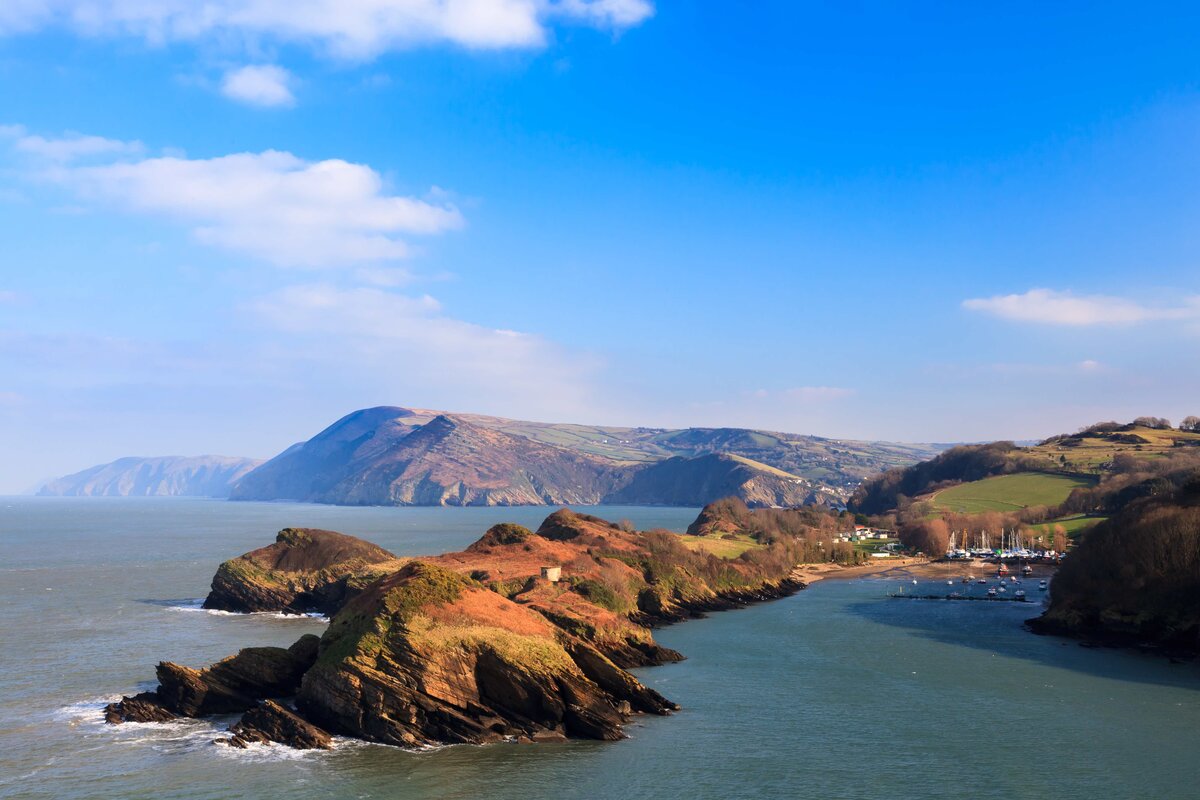
The area is home to Watermouth Castle, a Victorian castle that has been turned into a fun family theme park. It also houses a museum of toys and musical instruments, so I think it’s a great expedition for families.
The castle overlooks Watermouth Cove, a rocky inlet that epitomises the beauty of the North Devon coast. It’s a sheltered cove, which makes it the perfect spot for mooring boats.
Good to know: Watermouth is home to a number of rare marine species, due to it being such a sheltered and secluded harbour.
Woolacombe
Best for: An incredible beach
Must-do: Summer beach day
Where to stay: Woolacombe Bay Hotel
Woolacombe is generally considered to be one of the best beaches in the UK, if not Europe, having won numerous awards – and I can see why.
It’s a very popular surfing destination and also an idyllic place for a spot of sunbathing in the summer.
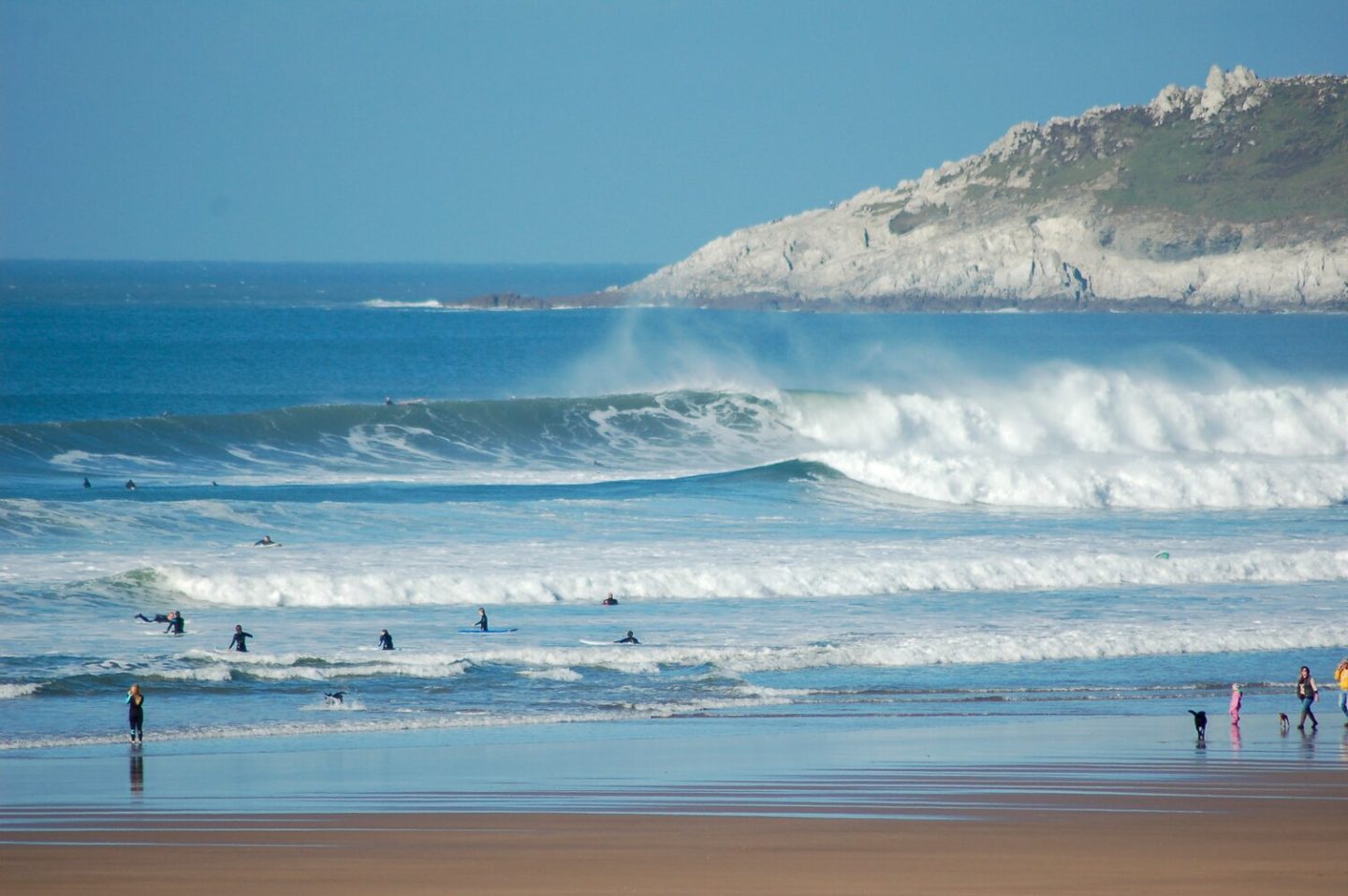
Understandably for such a popular beach, I find that it does get very overcrowded in the summer months. But although busy, the long length of the beach allows visitors to find a quieter spot.
Woolacombe itself is a lively, laid-back village with plenty of accommodation options. A lot of the surrounding landscape is managed by the National Trust, so it remains relatively unspoilt.
Good to know: There are a wide range of facilities at the beach, with ample parking. Lifeguards allow for a safer swimming environment, which I think makes it a great destination for families.
Best places to visit in South Devon
From the expansive moorland of Dartmoor National Park to the luxury of the English Riviera, I really love South Devon and I think it has so much to offer visitors.
Whether it’s a walking along the dramatic Jurassic Coast, or a relaxing riverside gem in a hidden pocket of this beautiful county.
If you’re planning a visit, discover the some gorgeous self-catering cottages in South Devon. Here are my favourite places to visit in South Devon:
Burgh Island
Best for: A secluded escape
Must-do: Ride the Sea Tractor
Where to stay: Burgh Island Hotel
Privately-owned Burgh Island is located just a few hundred metres from Bigbury-on-Sea on the South Devon coast.
Here you’ll discover perfect sandy beaches and an abundance of wildlife as you explore this idyllic island.
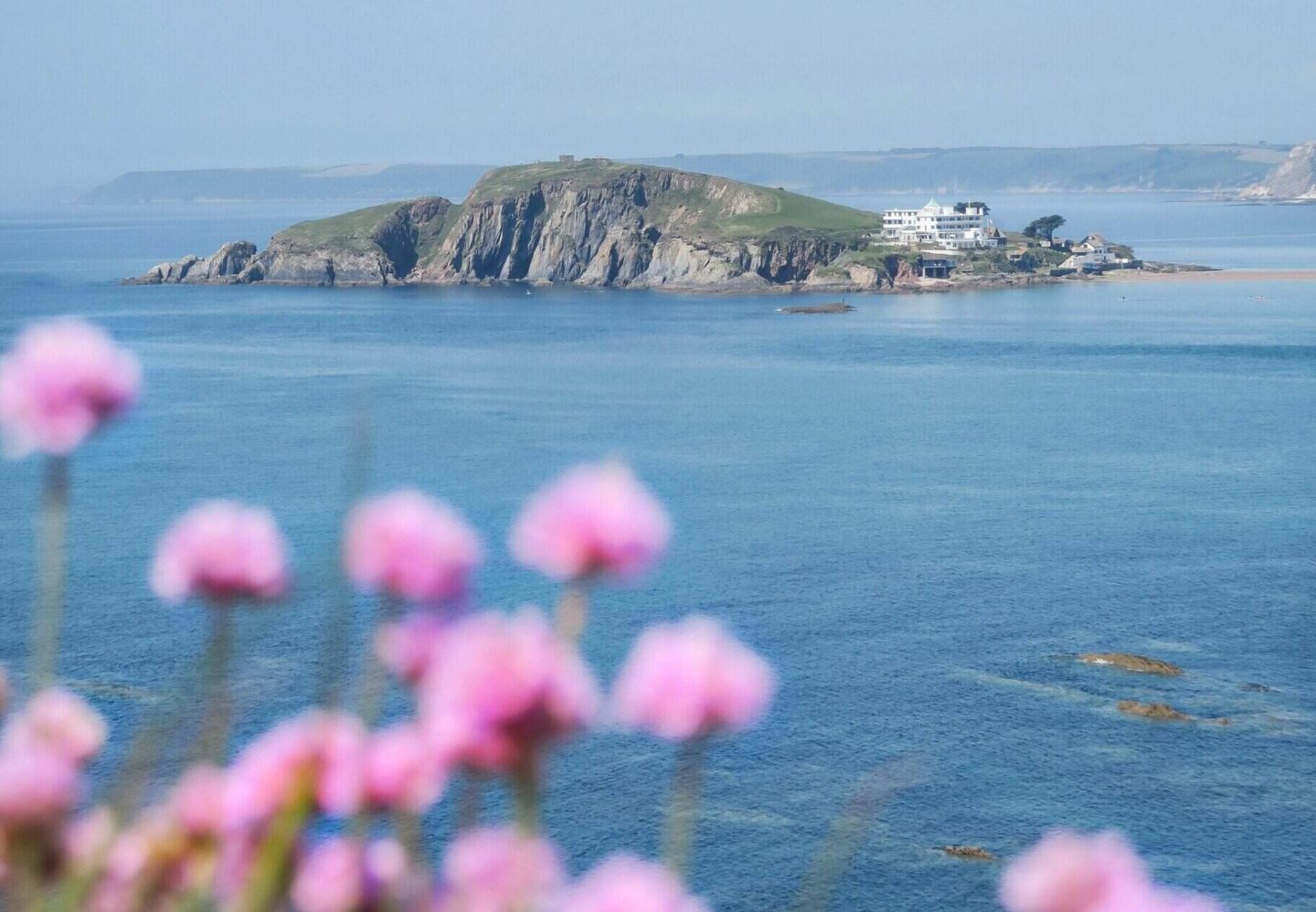
The island is home to a luxury art-deco hotel, Burgh Island Hotel, which has been graced by many famous guests. I’d definitely recommend a stay here, for a really unique experience.
One such guest was Agatha Christie and the island was the infamous setting of her novel, ‘And Then There Were None’. Burgh Island is also known for having previously been home to pirates and smugglers.
I love that it’s an inviting combination of the raw natural beauty of the surrounding scenery with the glamour and decadence of the island’s iconic hotel.
Good to know: Burgh Island is accessible via a strip of sand during low tide, while during high tide it is only reachable via a unique sea tractor – and it’s the only sea tractor in the world!
Dartmoor
Best for: Hiking
Must-do: Visit Pennywell Farm
Where to stay:
- Tavistock House Hotel
- Gidleigh Park – A Relais & Chateaux Hotel
- Bovey Castle
- Rockmount Rooms & Apartments
Dartmoor National Park is an expansive area of mysterious moorland in South Devon, covering 368 square miles.
An enchanting area of natural beauty, it is encompassed by myths of headless horsemen and stories of beasts and ghosts.
I’m sure you’ll be aware that it’s been an inspiration to writers for centuries, most notably influencing Arthur Conan Doyle’s Hound of the Baskervilles.
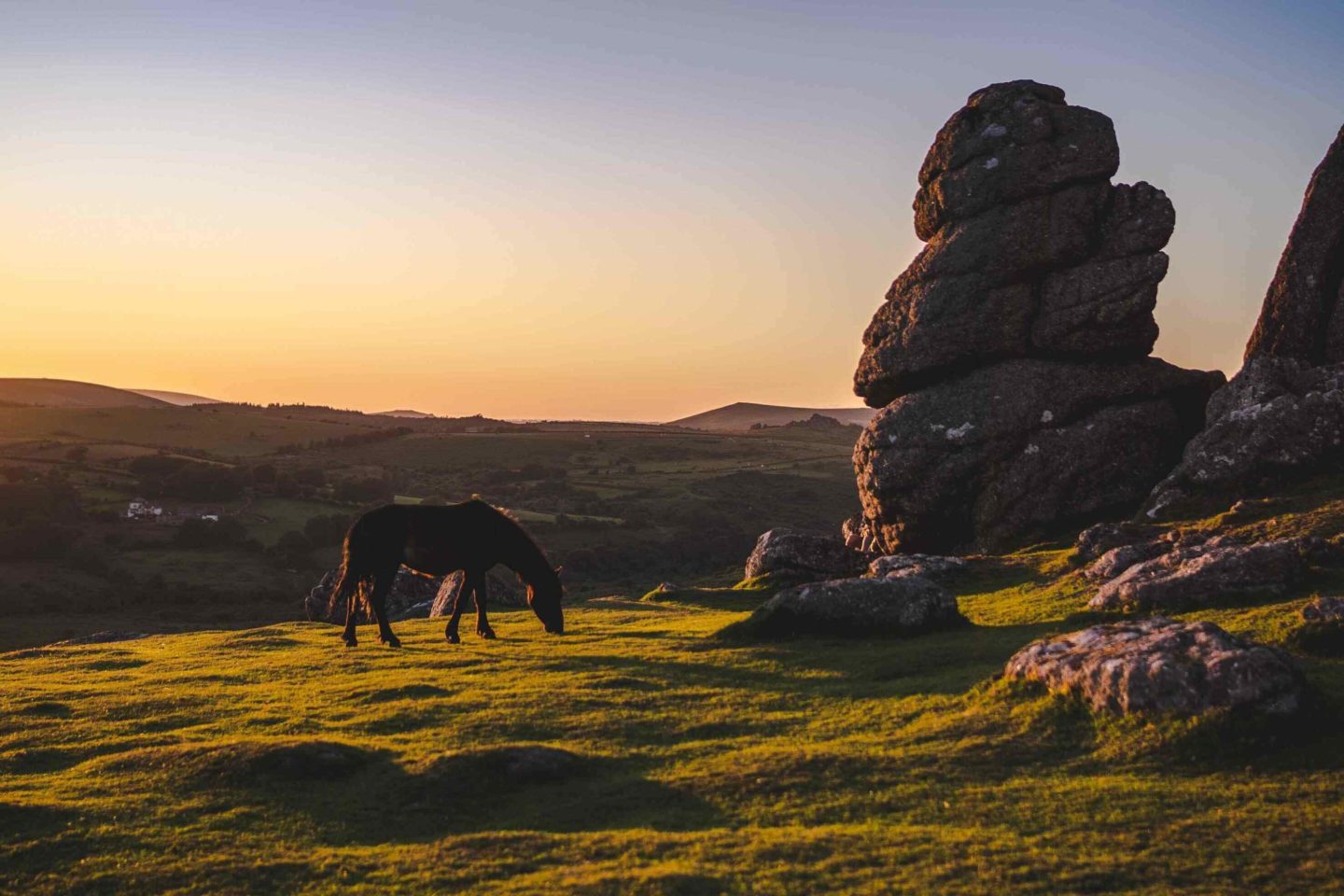
I know hikers will love this area, with extensive trails and various tors to climb. There are also guided tours where you can explore ruined castles and learn more about the rich history of Dartmoor. Discover deserted medieval farmhouses and Neolithic tombs.
The park is also home to plenty of wildlife, including Dartmoor ponies and Highland cows which roam free through the wilderness.
I’d suggest taking the opportunity to immerse yourself in the cultural heritage of the historical towns and villages which surround the park.
Aside from hiking, other activities include climbing, bouldering, horse riding, camping, canoeing, and kayaking.
Insider travel tip: The park is best accessed by car, as public transport is limited.
English Riviera
Best for: A touch of glamour
Must-do: Boat cruise
Where to stay:
- Cary Arms & Spa in Torquay
- The Sandpiper Guest House in Torquay
- Mercure Paignton Hotel in Paignton
- Channel View Boutique Hotel (Adults Only) in Paignton
The English Riviera is a 22-mile stretch of coastline in South Devon. It encompasses the Torbay area and includes the towns of Torquay, Paignton, and Brixham.
The flattering name came from Victorian times when visitors likened it favourably to the French Riviera. The area is a unique place where quaint fishing villages meet luxurious yachts.
Enjoy exceptional food and drink provisions, from traditional pubs to Michelin-starred cuisine and award-winning restaurants.
The English Riviera is one of my personal favourite places to visit in Devon, as it brings a touch of glamour while retaining its charming West Country appeal.
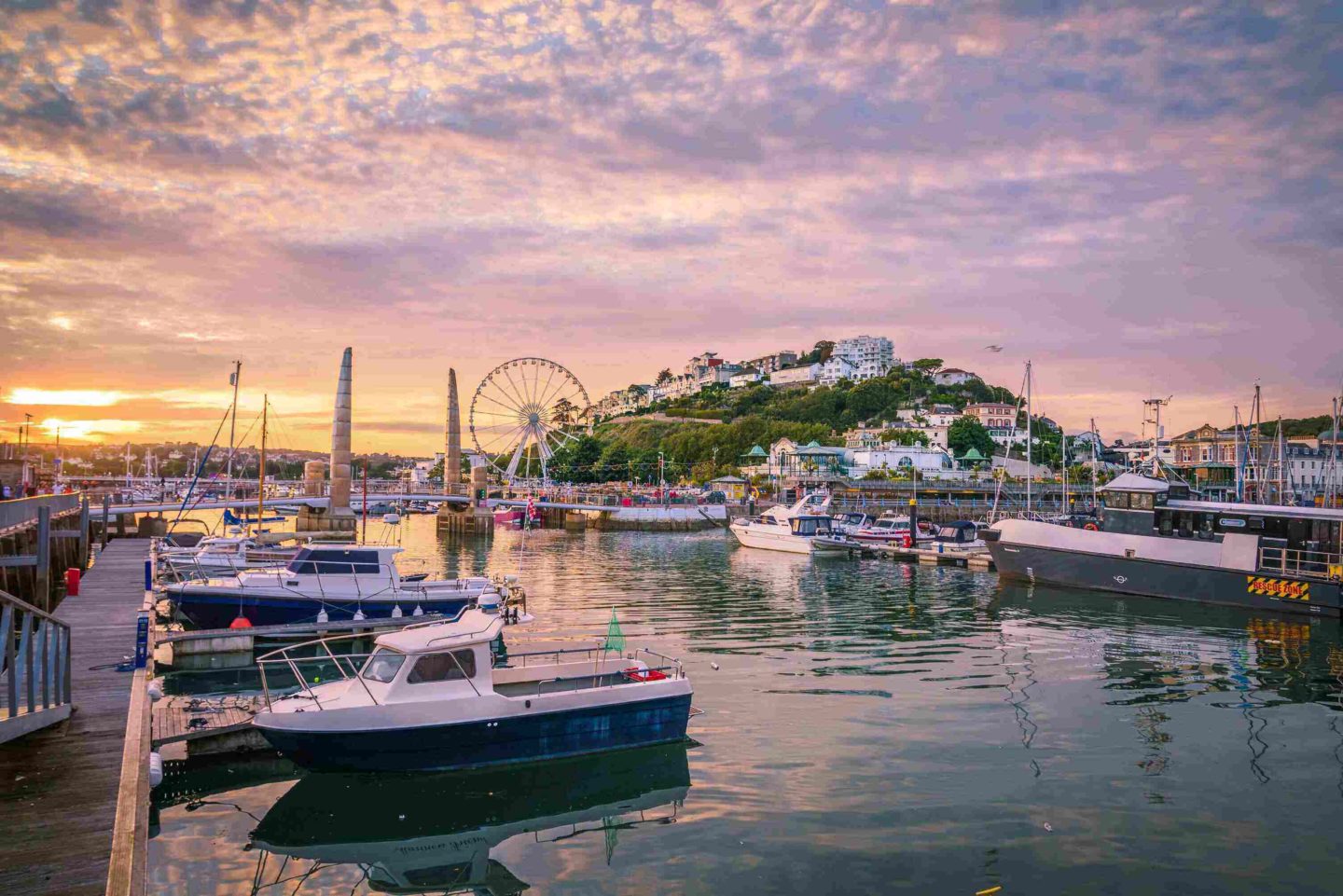
In terms of things to do, there are plenty of sandy beaches with beautiful water, many of which hold the Blue Flag for cleanliness.
The English Riviera is also famed for its mild climate – an unusual attribute for England and a great pull of the area.
Find some thrills with jet skiing, surfing, and sailing in Torquay. Or for some more relaxing activities, I’d suggest taking a fishing trip or a tranquil boat cruise.
The English Riviera is very popular with families, offering a number of fun and unique attractions for kids.
These include go-karting, quad bikes, and watersports for the mini adventurers. Explore the underground caves at Kents Cavern or enjoy a ride on the Babbacombe Cliff Railway.
Good to know: For a popular event, the area is home to the Agatha Christie festival, where visitors can enjoy fancy dress, guided tours, murder mysteries, and steamboats.
Exeter
Best for: Devon city break
Must-do: Royal Albert Memorial Museum & Art Gallery
Where to stay:
Exeter is a small but vibrant city with a 2,000 year history that dates back to the Roman era. I love this university city where history and tradition meet the modern and contemporary.
The stunning architecture includes an imposing Roman city wall, as well as one of the UK’s most impressive Gothic cathedrals.
I’d recommend visiting the Victorian displays and exhibitions at the Royal Albert Memorial Museum & Art Gallery.
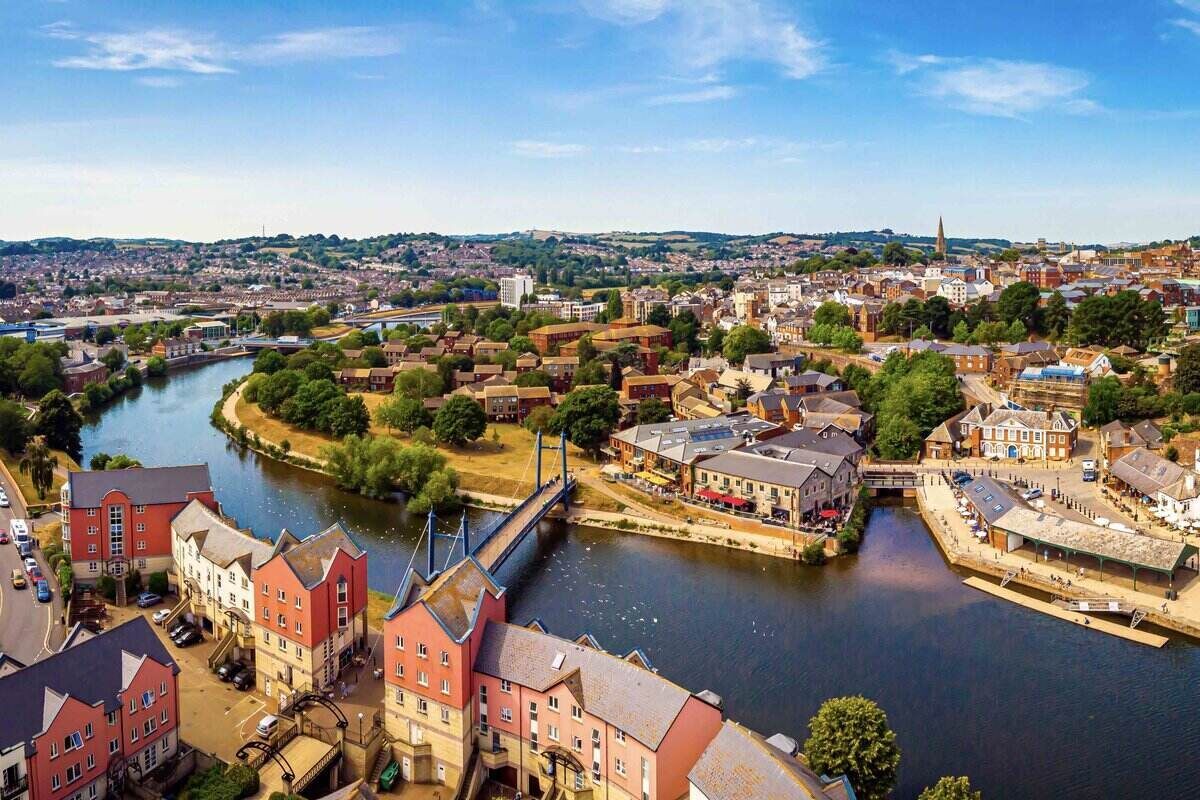
Exeter is also home to a pretty quayside that is located next to the River Exe. For something outdoorsy, go kayaking, canoeing or paddleboarding along the river.
Or, if you’d rather stay on dry land then I’d suggest going for a delightful stroll along the waterfront.
The city has a strong cultural pull, offering an independent arts scene, as well as being a destination for top music and sporting events.
As you’d expect from any UK city, there is a wide variety of eateries, from independent cafes and bars to recognisable restaurant names.
Good to know: You can explore the medieval subterranean tunnels as part of a guided tour. A fascinating experience but best avoided for the claustrophobic!
Jurassic Coast
Best for: Geological history
Must-do: Fossil hunting
Where to stay:
The Jurassic Coast is a seriously impressive natural wonder, stretching from Exmouth in Devon to Lyme Regis in Dorset.
It brings 185 million years of geological history exposed in imposing cliffs, hidden caves, and coastal stacks.
The coast is a fantastic place for fossil hunting, which is fun for both adults and kids. Just make sure that you only collect loose fossils and never pick away at the cliffs.
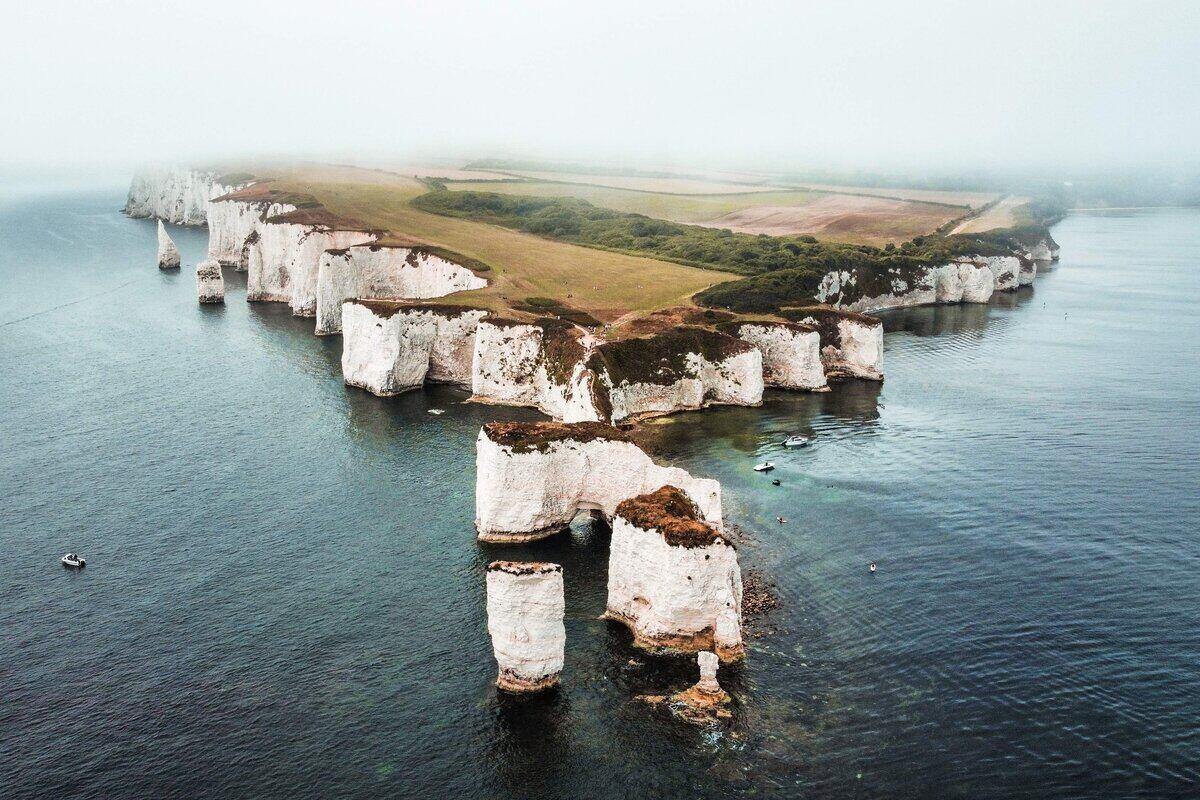
The Devon Jurassic Coastline is part of the South West Coast Path, so there are countless footpaths and trails to hike.
I think that walking is the best way to experience all that this unique part of the country has to offer.
The Jurassic Coast starts in Exmouth on the South Coast of Devon. Here you can discover the rich red Triassic Rock and see the stacks at Ladram Bay.
Sidmouth is another popular Devon spot along the Jurassic Coast. Visit Sidmouth Museum, go fossil hunting on Sidmouth’s beach, or take a boat to enjoy a unique view of the area.
I’m sure that families will also love the Seaton Jurassic family visitor centre, where you can learn all about the fascinating history of the area in an interactive way.
Good to know: The Jurassic Coast is a UNESCO World Heritage Site due to its aesthetic, historic, and educational significance. In fact, it’s the only natural World Heritage Site in England.
Discover hotels along the Jurassic Coast.
Plymouth
Best for: Retail therapy
Must-do: Wander The Barbican, Plymouth’s historic quarter
Where to stay:
Known as Britain’s Ocean City, Plymouth is a port city with a strong maritime tradition and a vibrant waterfront.
Its long history stretches all the way back to the Bronze Age. Surrounded by woodland, meadows, and gardens, I think it’s an open and attractive city.
Plymouth has a strong cultural heritage, hosting a variety of events throughout the year.
These include the British Art Show, America’s Cup World Series, the Barbican Jazz and Blues Festival, and the Marine City Festival.

There are a number of landmarks and historical sites to explore in and around the city. First up, I’d suggest heading to Plymouth Hoe, a beautiful natural harbour; hrre you can climb the iconic Smeaton’s Tower lighthouse for breathtaking views.
Explore the Royal Citadel, an important coast defence site, or get a bit merry at the Plymouth Gin Distillery. Discover the cobbled streets and 16th century architecture of The Barbican, Plymouth’s historic quarter.
Or if you want to head outside of the city, there are plenty of stately homes and gardens to visit in the surrounding countryside.
For families, see the deepwater fish tanks at the National Marine Aquarium, or go for a swim at Tinside Lido.
Good to know: The city is also home to one of the largest shopping centres in the South West, so I’d recommend it as perfect for a spot of retail therapy.
I’ve found it incredibly difficult to narrow down the best places to visit in Devon, as there is so much raw beauty to be found across the county, but these are my favourites! Let me know any of your own favourites in the comments below.
You may also like:
- 10 pretty seaside towns in Devon
- 10 charming towns in Cornwall to visit
- 30 amazing ideas for your UK bucket list

Amazing blog, I loved reading it please keep on writing blogs like this in future as well.